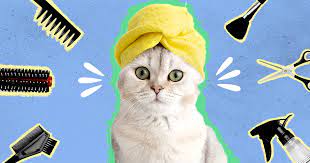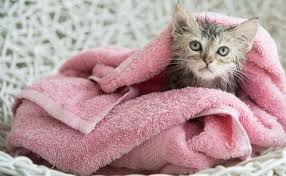


Grooming is an important part of caring for your cat.
Trimming their nails:
Trimming a cat’s nails is as much for your sake as it is for theirs because they can get very sharp, very quickly. A cat jumping in your lap for cuddles feels a lot less comfortable if their nails are like needles. Trimming them regularly (every two weeks or so) will reduce the chance of them hurting you by accident!
Not every cat is cooperative when it comes to getting a manicure, so here are a few tips to make the process go a little more smoothly.
1) “The Purrito”
It’s a minimally stressful way to hold a cat while still maintaining control over its limbs. Basically, wrap them in a towel so that all their legs are contained in the towel, and pull out one at a time to trim the nails on each paw. Make sure you wrap their jaw (gently) closed as well to reduce the risk of biting.
2) Have a helper!
Having someone to distract your cat with wet food or treats while you trim their nails is very helpful. If you have to do it alone, it’s certainly possible, but it will make it a more positive experience for your kitty if they’re being placated with snacks.
3) Don’t cut the quick!
The quick is the base of the nail and contains nerves and blood vessels, which means trimming into it will be painful for your kitty and make the experience less pleasant for everyone. The diagram on the right shows where the quick is relative to where you should be cutting your cat’s nails. Basically, cut off the “hook” of the nail.

Brushing your cat:
Even though cats are excellent at grooming themselves, brushing your cat regularly will help reduce shedding and hairballs, stimulate blood circulation, and provide an opportunity for some bonding.
How you brush your cat depends a bit on your cat’s coat. If your cat is a short-haired cat, brushing should be done along the grain of the fur, so you brush in the same direction the fur grows. With long-haired cats, you’ll want to first go against the grain to remove loose hair from the undercoat.
If your cat is starting to get fussy, take a break. You want to keep brushing a positive experience for your cat, which means respecting your cat’s wishes if they’re getting uncomfortable or overstimulated!
A few other tips:
